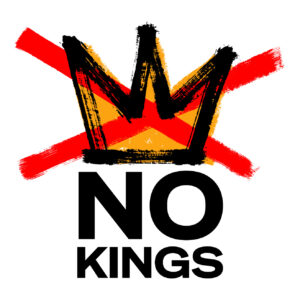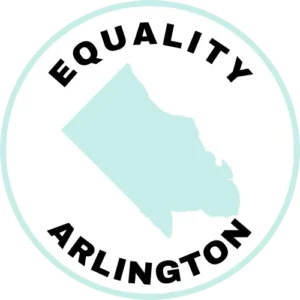
The Falls Church News-Press has partnered with George Mason High School’s award-winning newspaper, The Lasso, to bring its readers some of the top articles appearing in the student-run digital paper. This regular feature will appear monthly in the News-Press during the school year. The Lasso can be found online at www.gmhslasso.org.
11 Apps Mason Students Need

By Dorian Charpentier
Every student has a Macbook Air, but does everyone use it to its full potential? Here are the apps that are must-haves for your career at Mason. Most of them are also available on the phone.
1. Microsoft OneNote (Mac / iPhone / Android)
OneNote is your all-in-one digital notebook. You can classify them according to section and page. The notebook can include drawings, math expressions, writing, tables, pictures and recordings. Notes also synchronize between your phone and computer.
2. Pro Writing Aid (Web)
Have you been trying to improve your writing? Paste your essay in this handy tool, and it will point out overused words, suggest more variety in sentences and plenty of other pointers to improve your writing beyond grammar.
3. Spotify (Mac / iPhone / Android)
No matter what classes you take, there was a time you needed to do independent work. The class falls silent, and you realize you must work. If you have Spotify, just play anything that gets you pumped for the work ahead (except Taylor Swift, of course).
4. Adobe creative apps (Mac on Self Service)
The fact that you can get any Adobe app for free is probably one of the most overlooked features of this school. Photoshop, Premiere, After Effects and Dreamweaver are worth thousands of dollars. Professionals use them, but you can get them for free.
5. Microsoft Office Lens (iPhone / Android)
This app scans a document with your phone’s camera. That is very practical for digitizing a drawing or an annotated poem for example. It even removes reflections on whiteboards and crops the picture around your document.
6. PocketCas (Mac / iPhone)
Has your TI-84 or TI-89 gone missing? The $10 PocketCas app does everything these expensive calculators can do: plot and solve equations, find Taylor polynomials or factor.
7. WolframAlpha (Web / iPhone / Android)
“Height of the Empire State Building divided by height of Drake” will result in a simple answer on Wolfram Alpha. The app can help you with chemistry equations, math problems or satisfying your thirst for knowledge.
8. Quizlet (Web / iPhone / Android)
One of the main advantages of class Facebook groups is that people post Quizlets. You can learn Spanish vocabulary incredibly quickly with any one of Quizlet’s learning games.
9. Desmos (Web / iPhone / Android)
Sick of adjusting the window and zoom on your TI-84? Desmos graphs your equations, parametrics and derivatives. It can also find zeros and points of intersection, but best of all, it’s in color!
10. Photomath (iPhone)
If you are struggling through an equation, just take a picture of it, and Photomath gives you the result. Only use it to check your own answers though.
11. Khan Academy (Web / iPhone / Android)
Don’t understand photosynthesis or systems of equations? Khan Academy helps you learn through videos the topics you have been struggling or review for the test. It has pretty much anything you will study in economics, physics, chemistry, biology and math. Who needs school?
What’s in the Name? Universities Overreact
By Megan Jenkins
Fairfax County Public Schools, Yale University, Princeton University, Georgetown University. These schools, among many others, have embarked on a movement to disassociate themselves from some of their eponyms.
These efforts are noble, but still raise the question: How far should schools and universities go to eradicate traces of racism from the names within their campuses? At what point are these institutions revising history rather than accepting it?
For example, just down the road, Fairfax County Public Schools is considering changing the name of two of its high schools: J.E.B. Stuart High School in Falls Church and Robert E. Lee High School in Alexandria. Students began a petition to change J.E.B. (James Ewell Brown) Stuart first. It was named after a Confederate general in the Civil War.
Subsequently, the Fairfax County School Board changed its naming policy in December, 2015, allowing a name change if there is a “compelling reason.”
At Yale University, students formed a petition signed by over 9,000 people to rename a residential hall which was named after John C. Calhoun, a man who was a staunch supporter of slavery throughout his life, yet also a graduate of Yale who went on to be vice president of the United States.
In November 2015, Princeton University faced pressure from students to remove Woodrow Wilson’s name from the Woodrow Wilson School of Public and International Affairs.
Princeton’s president has also agreed to begin the process of considering the removal of Wilson’s name from the school.
Wilson was a known racist, having implemented several segregationist policies during his time as the twenty eighth President of the United States and President of Princeton University. Yet, he formed several vital foundations for American society and economy regardless of race: the Federal Reserve Act and the Federal Trade Commision. And, regardless of what one may think of him, he did serve as President of Princeton and the United States.
Of course, it is key to recognize the imperfections of idealized individuals such as Lee, Calhoun and Wilson, and weigh their faults against their successes.
However, we cannot always hold our evolutionized standards to those who have lived before us. Those men lived in an era of racism and white supremacy, where believing in racial equality was unpopular.
Racism and white supremacy are not acceptable at any level. But to what extent should we condemn the actions and beliefs of those who lived a century, maybe more, before us?
Each individual school and university must decide where to draw the line between revising history and accepting it.
These articles plus more from The Lasso available at www.gmhslasso.org.













